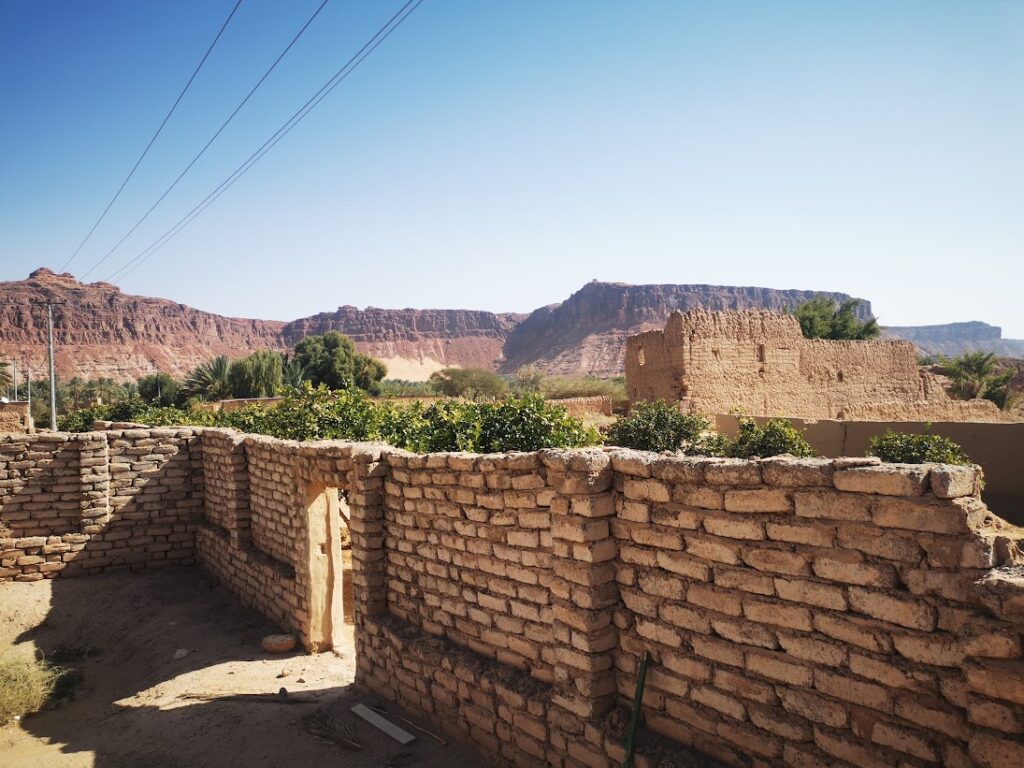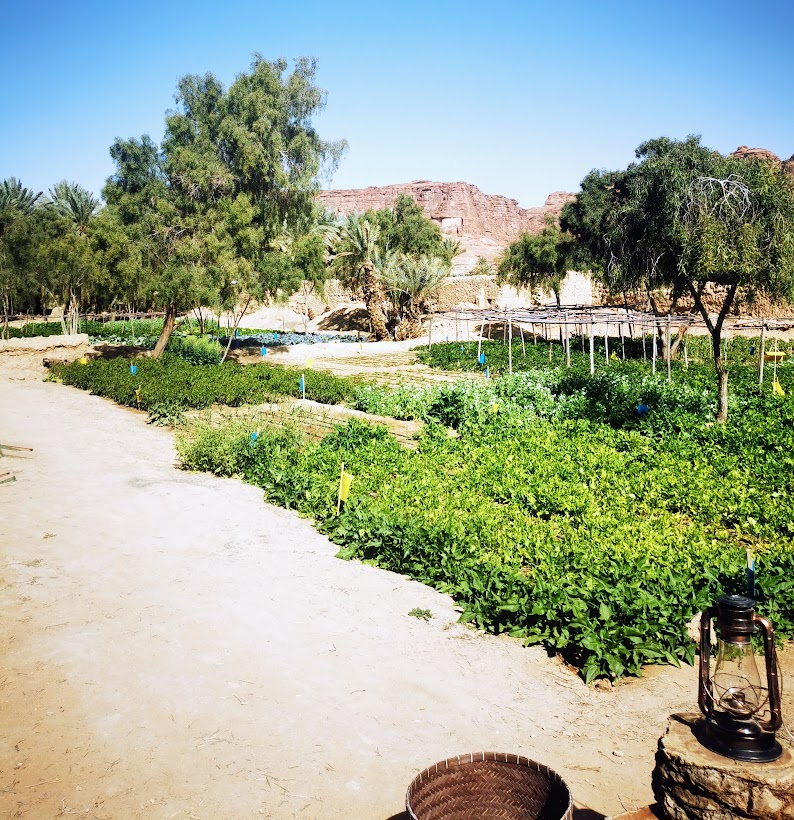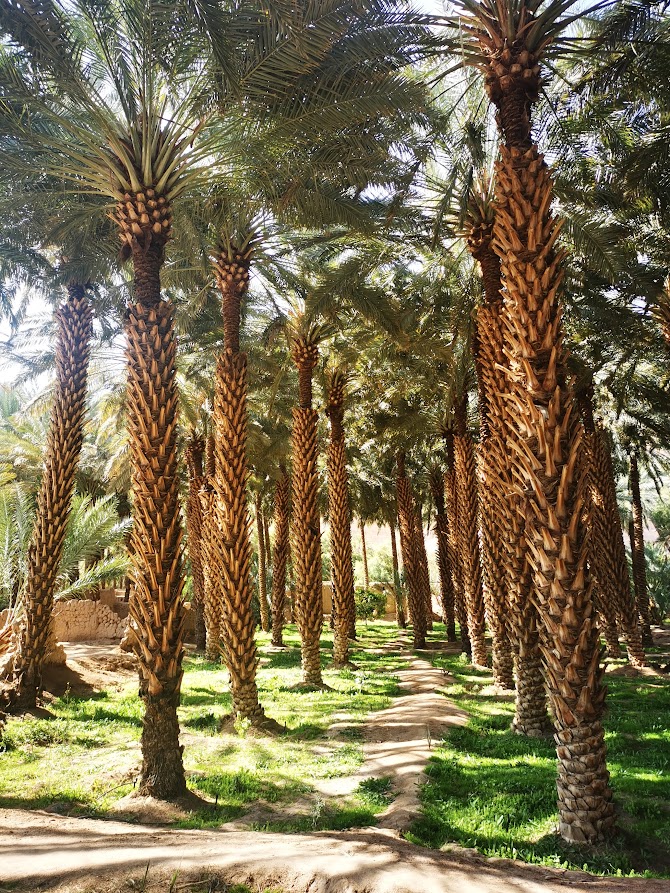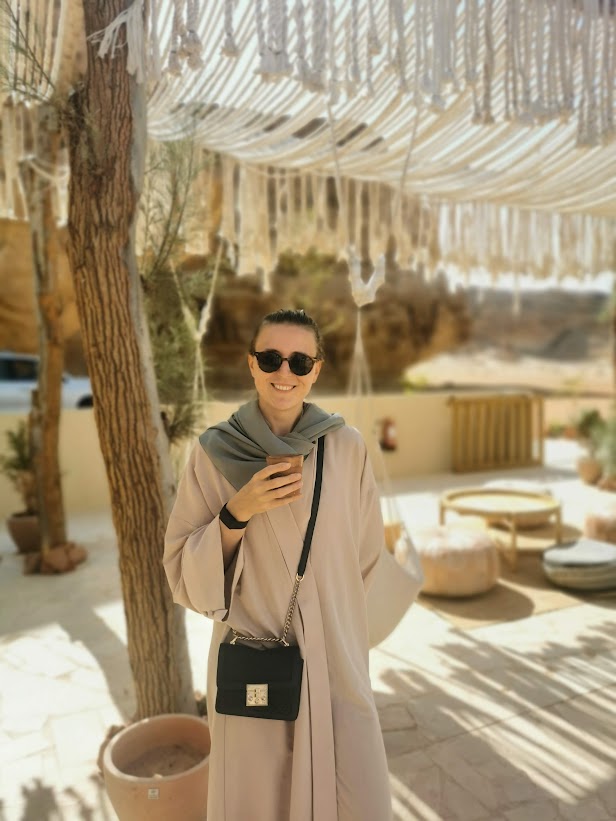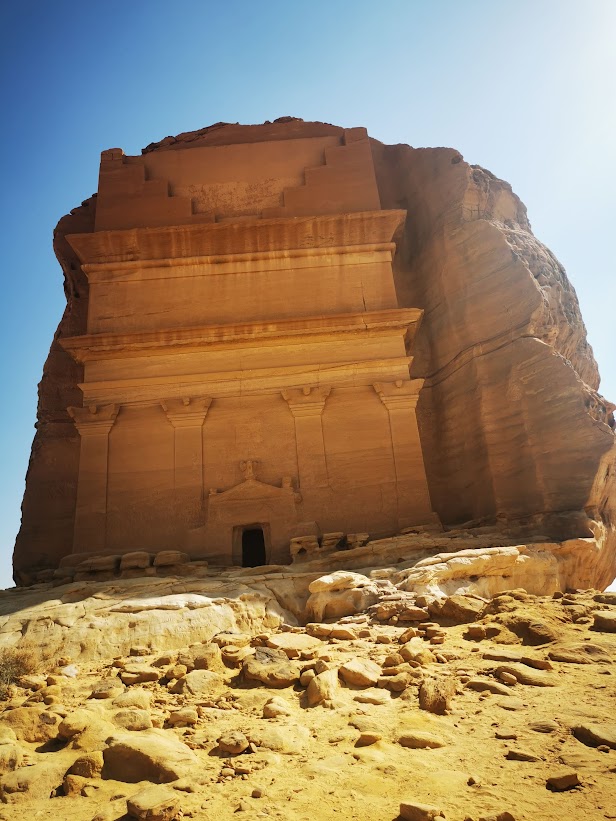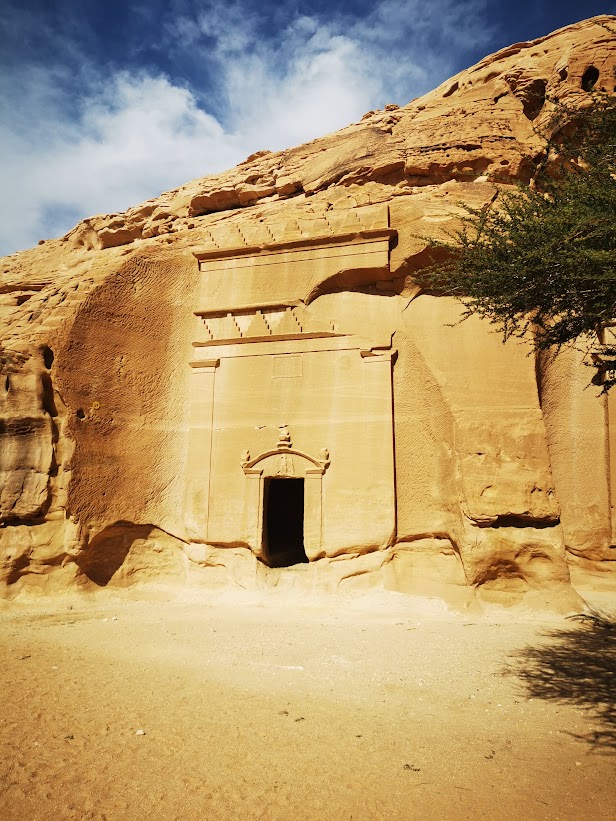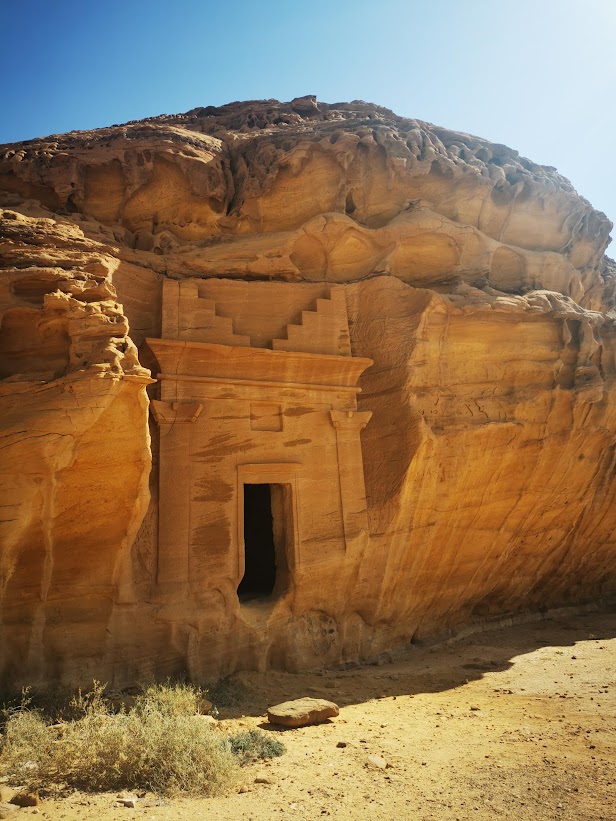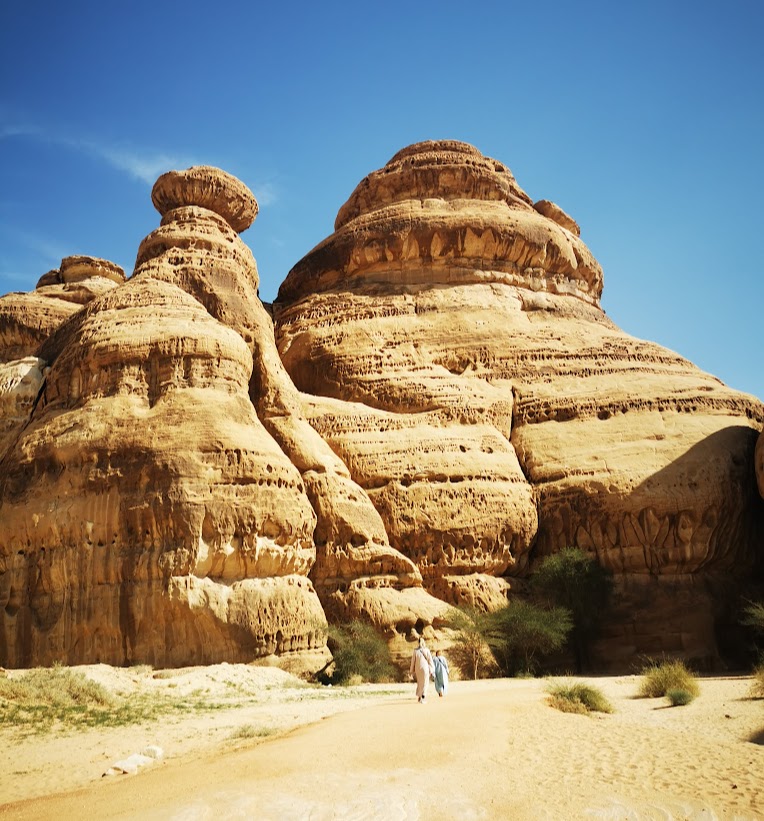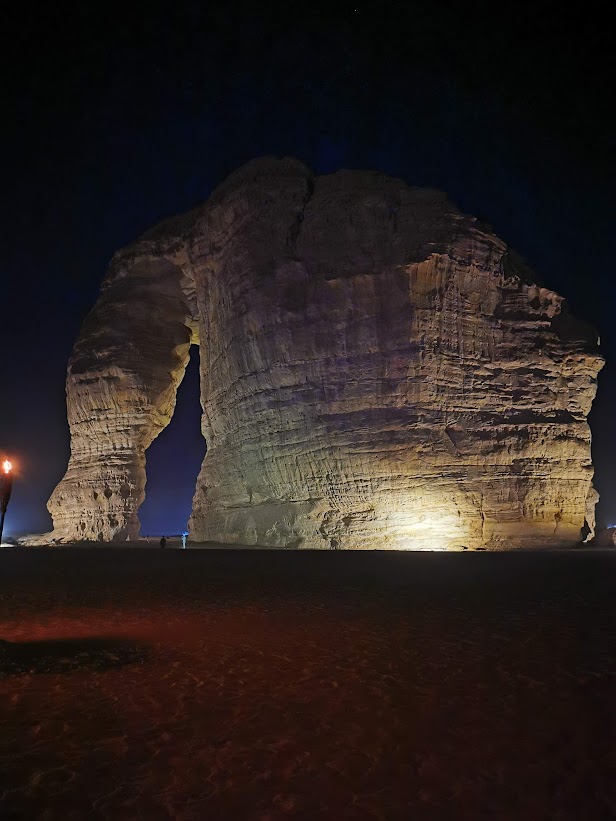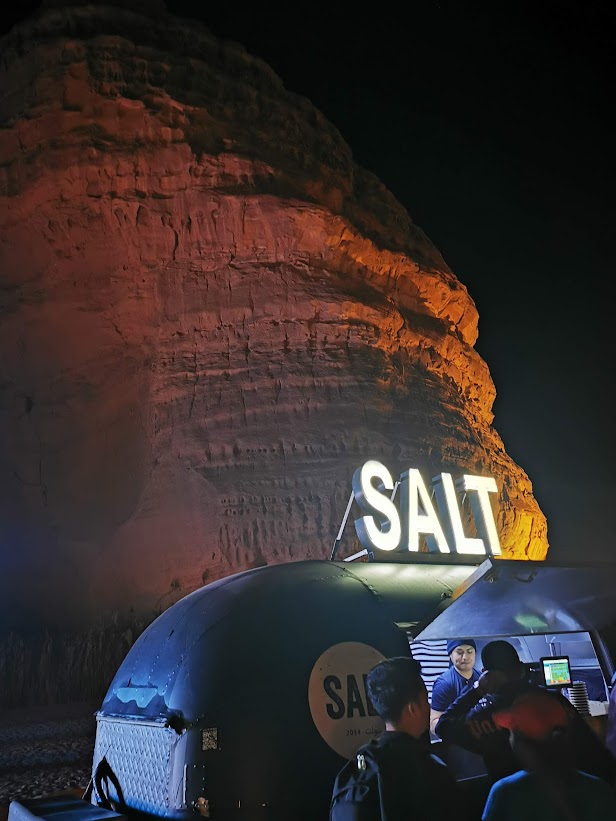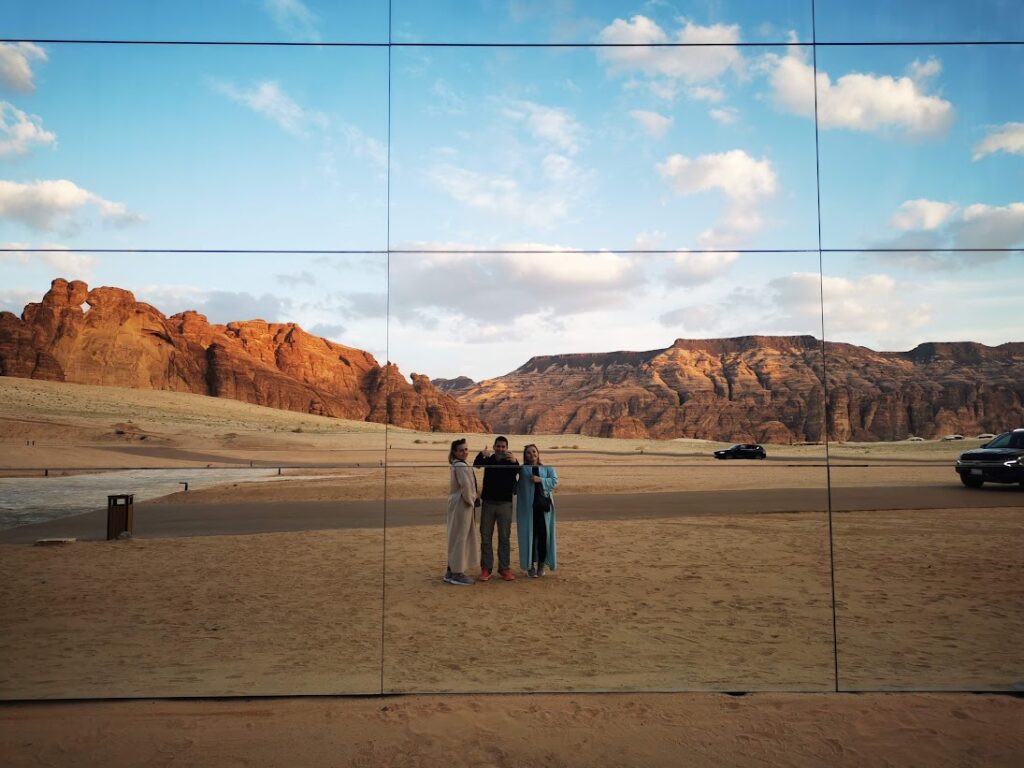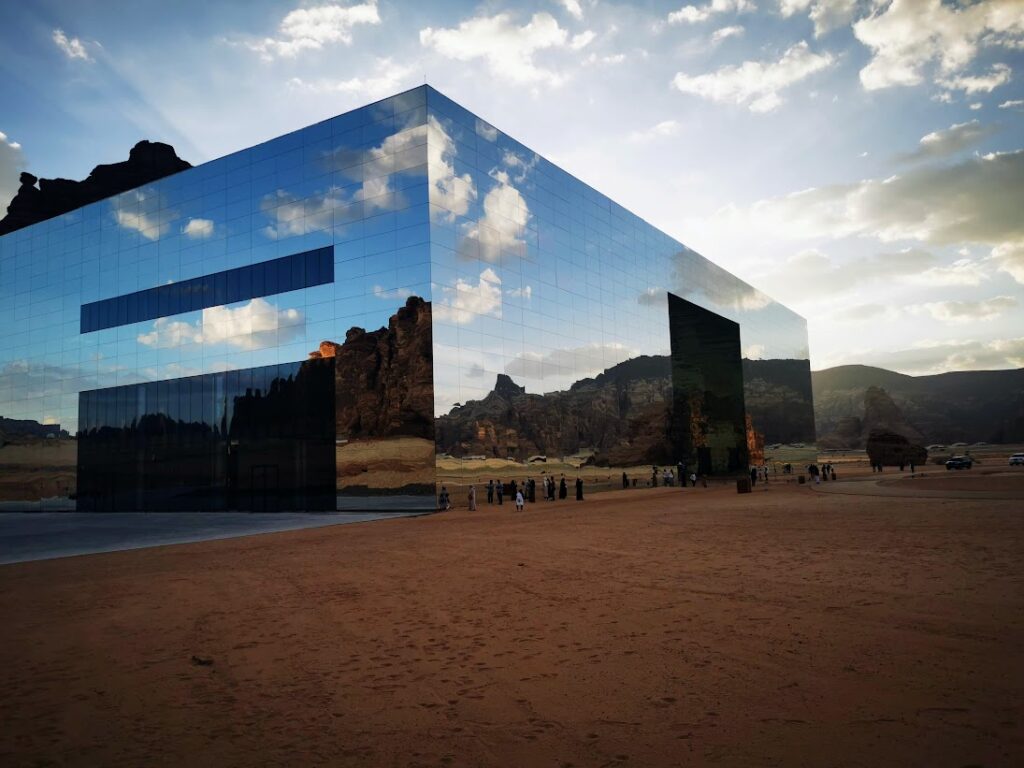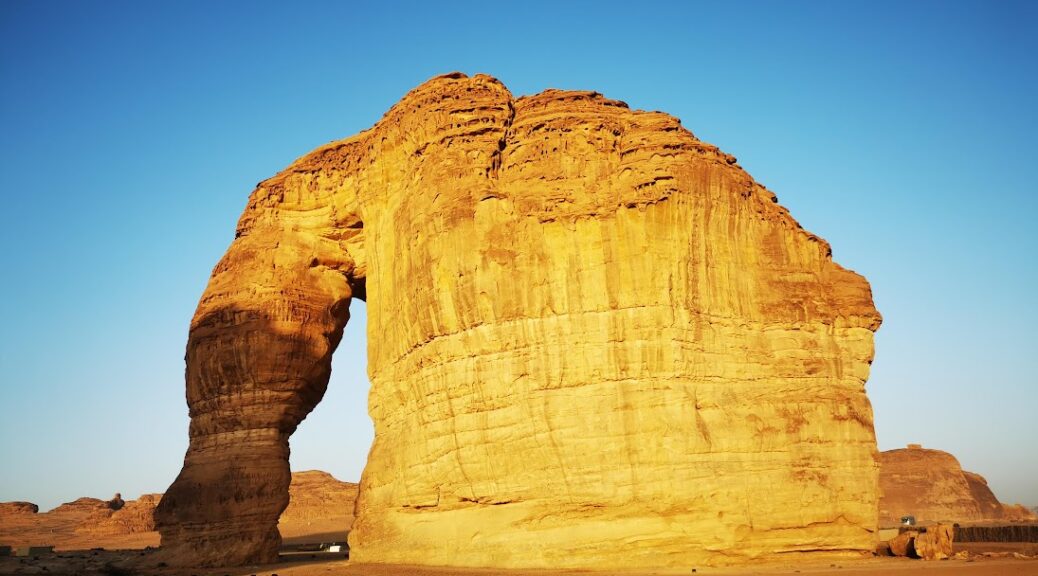
The Ultimate Traveler’s Guide to Al Ula, Saudi Arabia
Since Saudi Arabia opened to tourism, Al Ula appeared on many travelers’ bucket lists. Its unique natural beauty, an unparalleled wealth of history and culture combined with many activities and attractions promise a truly unique experience. There are not many other places I fall in love with the moment I stepped off the plane.
- Why go to Al Ula?
- History of Al Ula
- How to get to Al Ula (travel, visa, car rental)
- Where to stay in Al Ula
- What to see in Al Ula?
- What to do in Al Ula?
- Where to eat in Al Ula?
- The best time to visit Al Ula
- Cultural etiquette to keep in mind in Al Ula
- What to wear in Al Ula
Why go to Al Ula?
In short: for unique nature, to discover rare historic sites and enjoy all that with what is still just starting to be a touristic place.
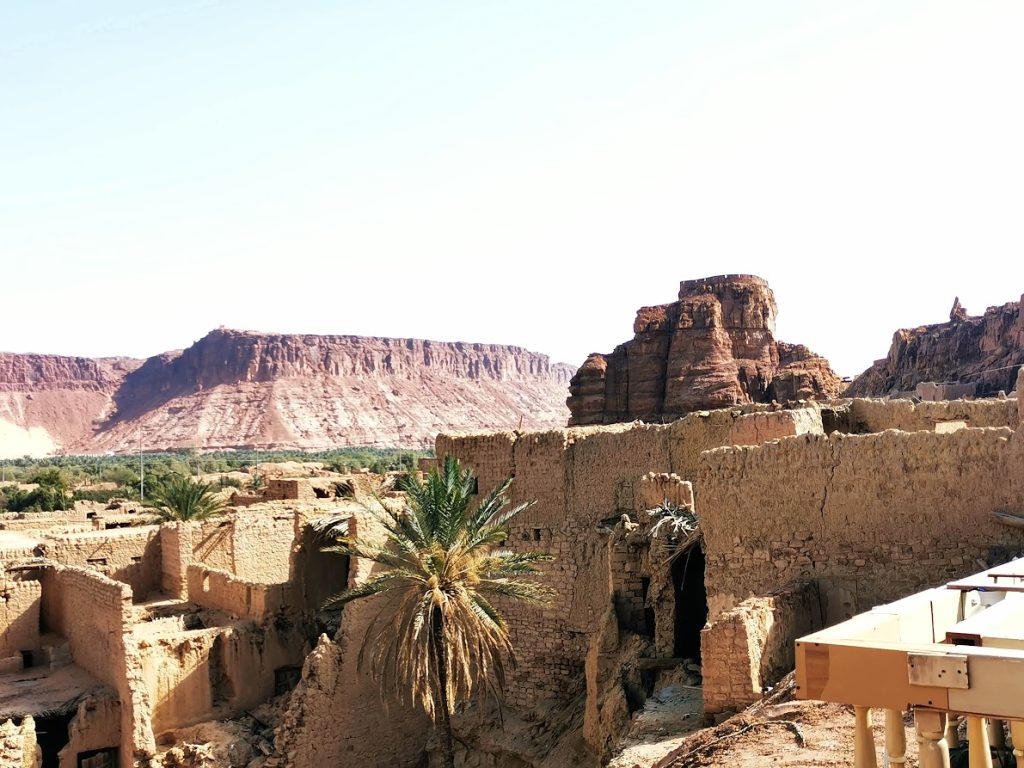
From the ancient Nabatean ruins at Hegra to the traditional way of life of the Bedouin people, Al Ula lets you feel the history. Exploring this rich heritage is an immersive and unforgettable experience that will give you a deeper understanding of the region’s past and present.
Secondly, Al Ula is a place of natural beauty, with stunning landscapes where the desert meets rocky mountains and sandy mountains provide shadow to palm valleys or local farms. Several times I found myself stopping the car on a side of the road just to enjoy the view.
Finally, Al Ula is a destination that is still relatively off the beaten path, which means that visitors can experience a sense of authentic adventure and discovery. While the government invests heavily in its development and promotion, aiming to make it one of the primary tourist destinations in the region, most of the visitors are still locals. As a non-Saudi and non-Arabic speaker, you’ll have a lot of fun trying to figure things out but you will definitely get your chance to get very close to the traditional culture in its whole beauty.
History of Al Ula
Al Ula is a destination that has a rich history and culture dating back to the ancient Nabatean civilization that thrived in the region between 4th century BC to 106 AD. The Nabateans were a nomadic people who controlled the trade routes of the ancient world and built a network of cities, including Hegra (part of the Al Ula region), which is now a UNESCO World Heritage Site similar to its more famous predecessor Petra in Jordan.
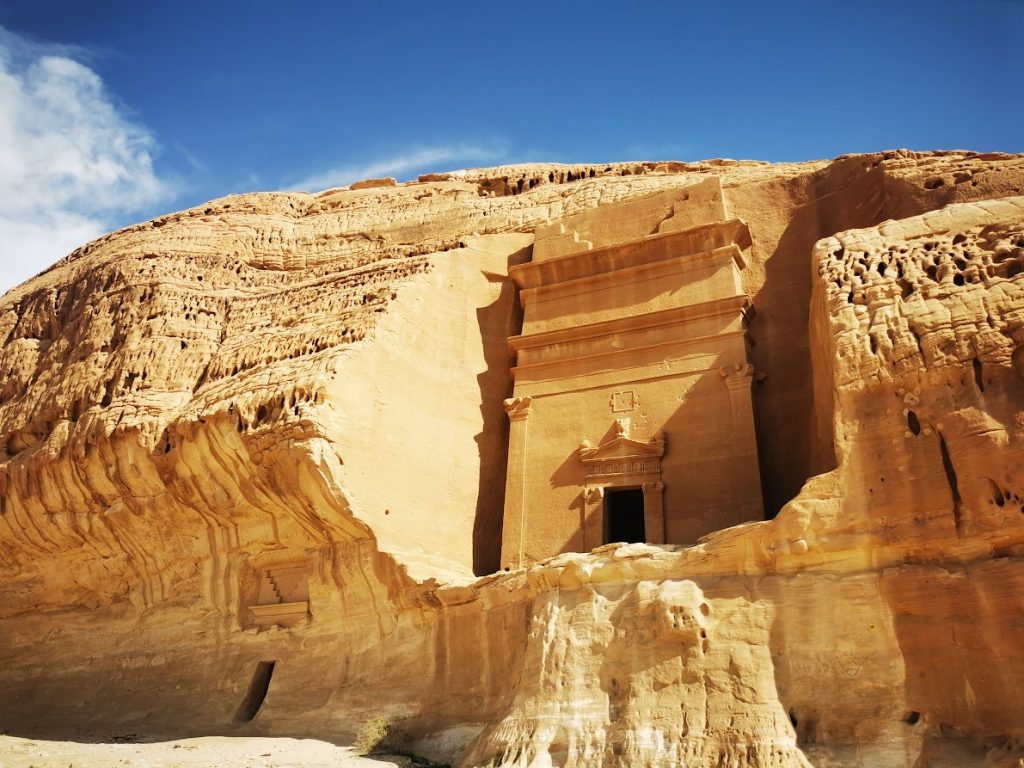
Both Petra and Al Ula were important trading centers for the Nabateans, and the impressive architectural and engineering feats at both sites bear witness to the skill and ingenuity of this ancient civilization. Both cities were key points of the Incense trade route that linked the Mediterranean world with Arabia, India, and East Africa and played an important role in the economical development of the Nabateans. We were in Petra some time ago and it is definitely worth visiting both sites as they are quite different.
How to get to Al Ula
Al Ula is quite far from other major cities (closest Medina or Tabuk are around 3.5hrs drive), so getting there by plane is usually the most comfortable option for tourists. Al Ula has its own international airport which might be one of the cutest airports I’ve ever visited. However, it’s quite small and there are usually around 5-10 flights per day operating there.
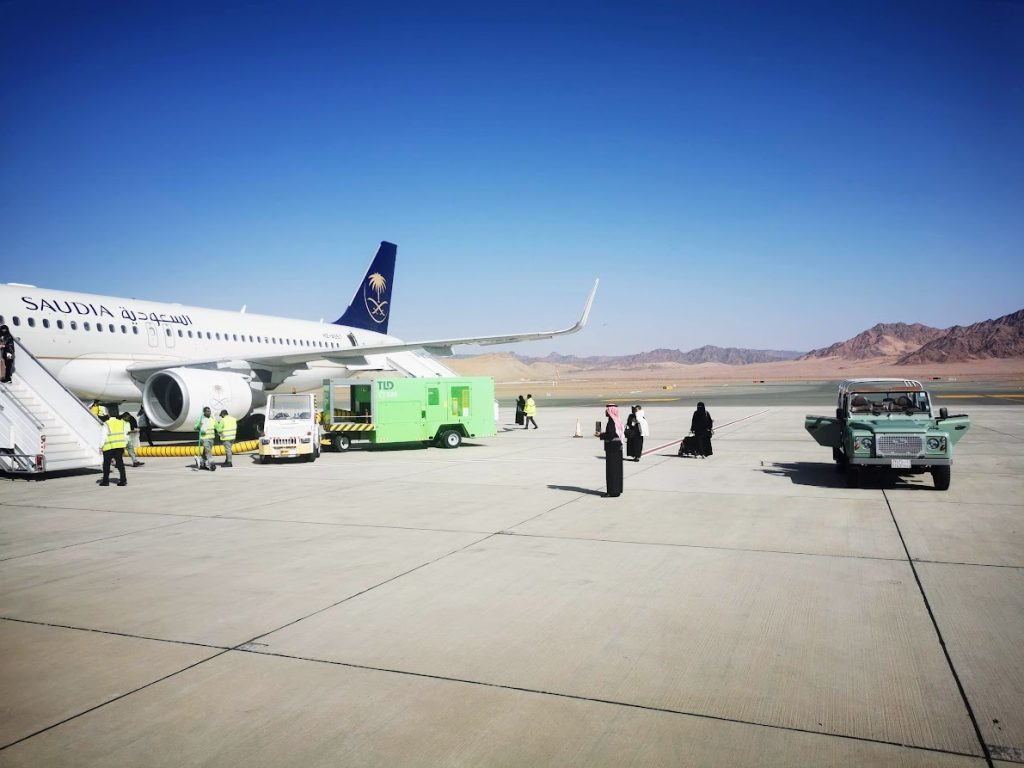 If you can’t find a suitable flight, you might check for flights to Medina or Tabuk and then get a car or taxi ride from there.
If you can’t find a suitable flight, you might check for flights to Medina or Tabuk and then get a car or taxi ride from there.
Do you need a visa to visit Al Ula?
Saudi Arabia is now open to tourists and you can easily check online if you need a visa. You can also get them on arrival in one of the easy-to-use kiosks before passport control when entering the Kingdom. The process is quite simple and straightforward. The multiple-entry tourist visa is valid for one year from the date of issuance, and the permissible period of stay is 90 days.
Car rental in Al Ula
Al Ula is a large area of several cities and villages. Getting around in a rented car is definitely the most comfortable option if you don’t want to spend a fortune on taxis or be dependent on tourist buses – for perspective, from Al Ula airport to the Hegra UNESCO site is a 55km drive. We rented a car from Lumi which operates from the Al Ula airport and has a well-maintained fleet at good prices. There is also Budget car rental and several small rentals in the city.
Where to stay in Al Ula
While Al Ula offers a variety of options from camping tents or luxury glamping camps to apartments or luxury hotels, accommodation capacity is still being developed so you might find limited options during high season or some special events.
We stayed in an apartment we found on Booking.com – for 2 bedroom apartment that could fit 4 people, we paid 390 SAR per night (January 2023). If you’re lucky or traveling mid-week, you will find lower prices, however, during the busiest days this price can go over 1,000 SAR per night.
It’s definitely worth booking the accommodation well in advance. You can use Booking.com or Airbnb and don’t get surprised that many properties are listed in Arabic language only. In general, most of the attractions and tourist sited are North of Al Ula old town. The Southern you go, the cheaper prices you can find.
If you’re looking for a truly unique experience, here are some extraordinary places we saw (but didn’t try):
– 26° North Glamping
– Caravan by Habitas
What to see in Al Ula?
The beauty of Al Ula is that you can only drive (or walk) around and get amazed by the natural landscape. If you enjoy unique sceneries, you can spend days just wandering between places, taking thousands of pictures, and just enjoying yourself.
But worry not, Al Ula has many tourist sites worth visiting:
Al Ula Old Town
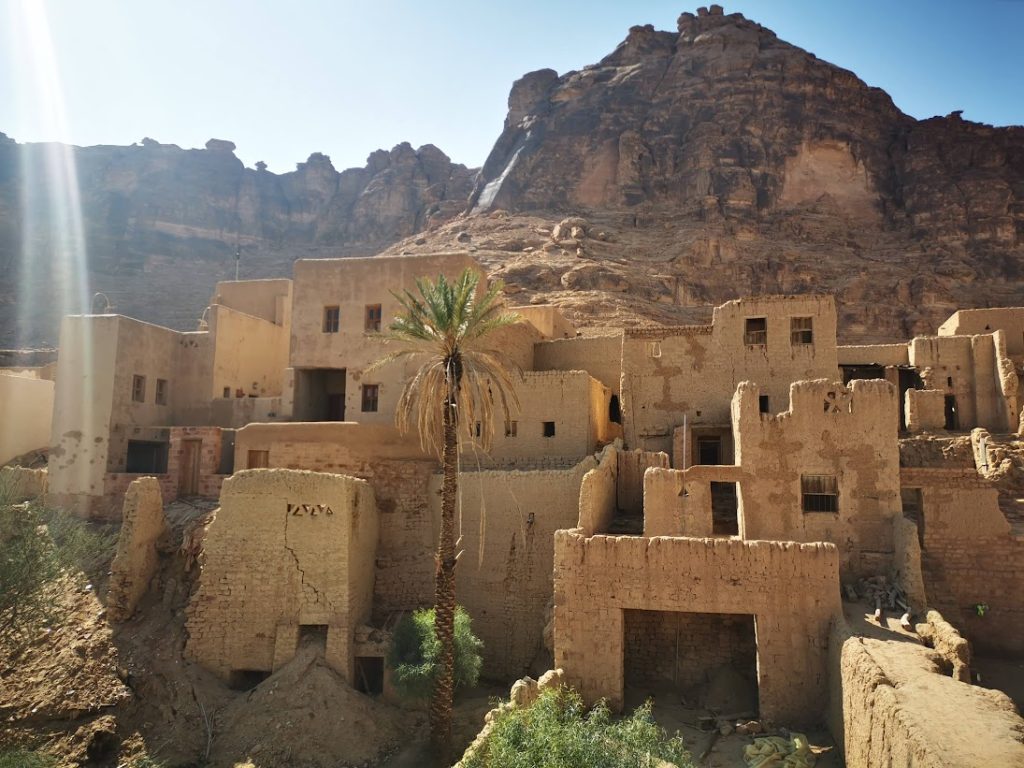
Walk through a well-reconstructed old town that didn’t lose anything from its original magic, dine in some of the traditional restaurants or get souvenirs from local shops. During the season, there is often live music and other performances, you can also get a guided tour through the old town.
Oasis Heritage Trail
Just opposite Old town is the Oasis trail where you can walk through a little local farm and see all kinds of fruits and vegetables they’re able to grow in Al Ula. You just don’t expect to see tomatoes, cauliflower, strawberries, potatoes, beetroot, peppers, zucchini, eggplants, Rocca, and tons of others in the middle of the desert. All that is in the shadow of grown palm trees so this is a good walk during noon time.
Hegra UNESCO World Heritage Site
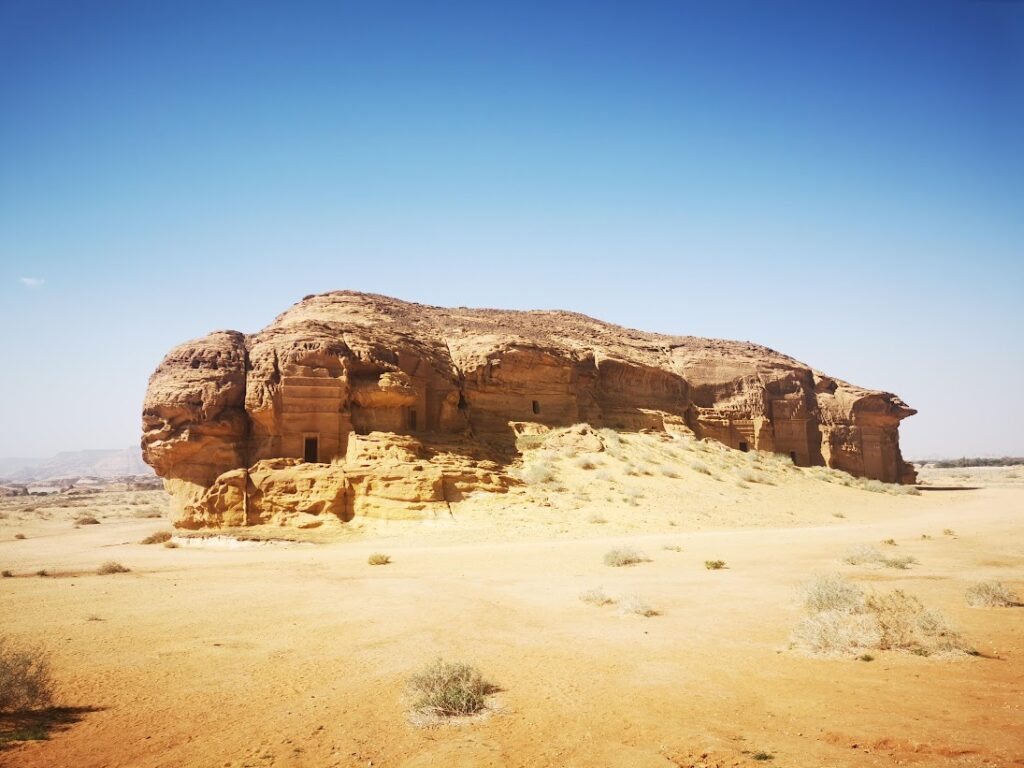
The famous UNESCO site is a large area in the north of Al Ula. Hegra was home to the Nabataeans who lived here around 2,000 years ago. Being located on an important trade route, the city of Hegra is believed to have had 10,000 citizens during its busiest period. What you can see today are tombs of its most exclusive citizens. How to tour Hegra? You can book your tour via Explore Al Ula website or app. The tour starts from a winter park near the city center and the bus will drive you to Hegra visitor center where the tour actually starts. The tour consists of 4 stops – the bus will drop you at each of them (and then the bus leaves (!) so don’t leave anything in the bus), a local guide will brief you about the site and then another bus will pick you up.
The tour takes around 2 hours and it is definitely worth it. The sites are beautiful, given people are not allowed to move freely around, everything is very clean and the place has an amazing vibe. If you’ve been to Petra, you will be pleasantly surprised that there are no local hustlers to charge you for taking a picture or offering a camel ride or another tourist scam. Compared to Petra, the area is way smaller as there is still excavation underway and there is only one tomb where you are allowed to inside. Still, it’s really amazing place!
Tip: All the tickets were sold out on the website when we visited. In the visitor centre at Winter park, we were told there’s no way we can visit Hegra. However we drived there and were able to buy tickets directly in the Hegra visitor center with no issues. The buses were almost empty so I’m not sure what does “sold out” mean. Either way, you can always try to visit Hegra visitor centre and get tickets from there.
Dadan
Dadan was the capital of Dadanite and Lihyanite Kingdoms. The city was built in stone between the late 9th and early 8th century BCE (Kingdom of Dadan) and 5th–2nd century BCE (Kingdom of Lihyan). It is located near Al Ula Old town, however, its tour (book online – the tour is combined with Jabal Ikmah) starts from the Winter park as well.
Jabal Ikmah
Jabal Ikmah is sometimes nicknamed as a huge open-air library as it is famous for having hundreds of ancient inscriptions in Aramaic, Dadanitic, Thamudic, Minaic and Nabataean. That’s why Al Ula is considered one of the most important areas for studying the Arabic language. The tour is combined with Dadan city and you can book it online.
Jabal AlFil (Elephant Rock)
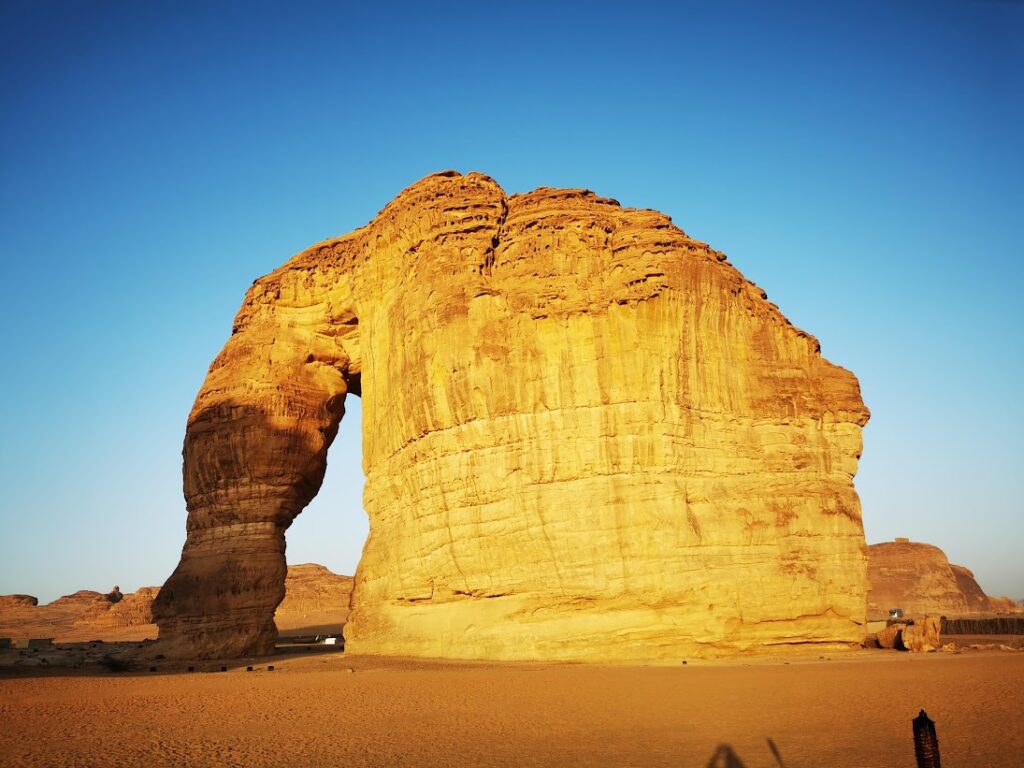
Elephant rock is maybe the most famous rock in Al Ula. Shaped by natural forces — millions of years of wind and water erosion – the rock really looks like an elephant. You can visit it for free daily from 4 PM and expect it to get busy, especially during sunset. There is also a cafe with nice “under-the-sand” seating and the signature Dubai burger joint SALT (don’t ask me why there is Dubai burger joint at Al Ula’s Elephant rock :)). The rock is beautiful, however, I have mixed feelings about the place. It gets very crowded and the big LED screen at SALT quite ruins the atmosphere.
We went from an Elephant rock to walking around and discovering some nearby places and found a nice rock with a bowling pin-shaped hole. If you get up there, there is a beautiful view of the Jabal AlFil as well as the whole area.
Harrat Viewpoint (AlUla 360)
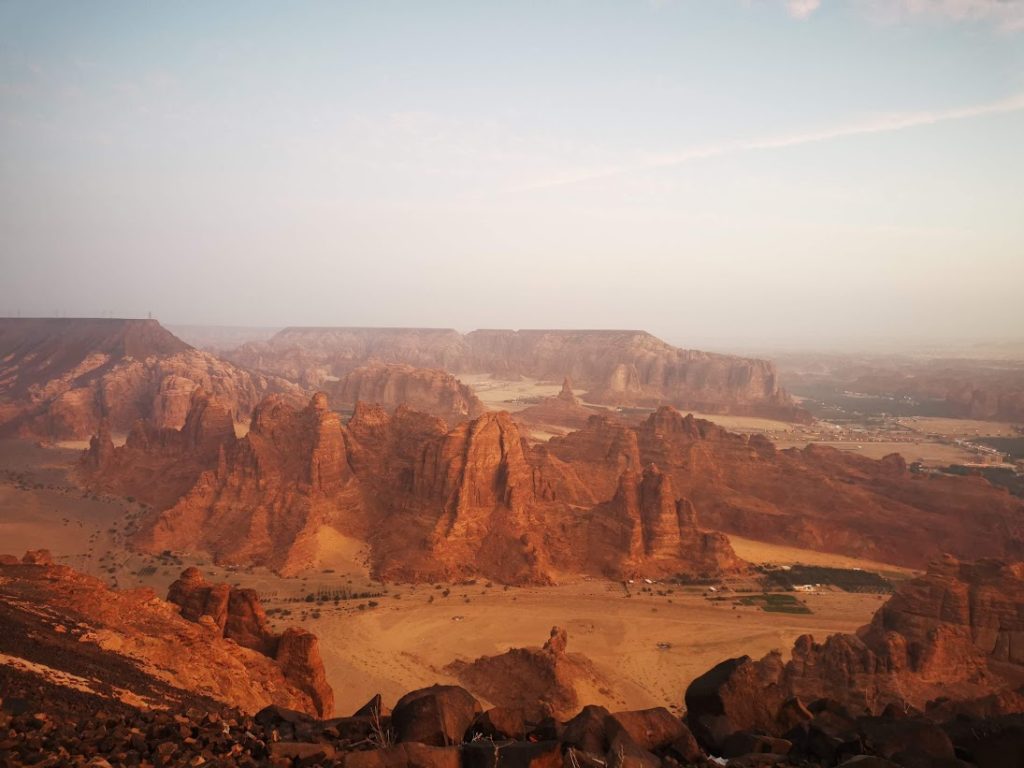
If you want a perfect view on Al Ula, there’s no better place than Harrat Viewpoint. A 20-min drive from the Winter park can get you to the highest point in Al Ula where you can enjoy beautiful views. This spot is actually amazing for sunrise, but… the viewpoint is closed until 10 AM and the guard won’t let you in.
He still showed us nice viewpoints over the valleys, Jabal Ikmah, and towards Hegra, but you don’t get to see the city itself. Until this changes, it might be better to visit after 10 AM and sunset time will probably be perfect. There is also a greek restaurant OKTO so you can combine it with lunch or dinner (booking recommended).
Maraya – the largest mirrored building in the world
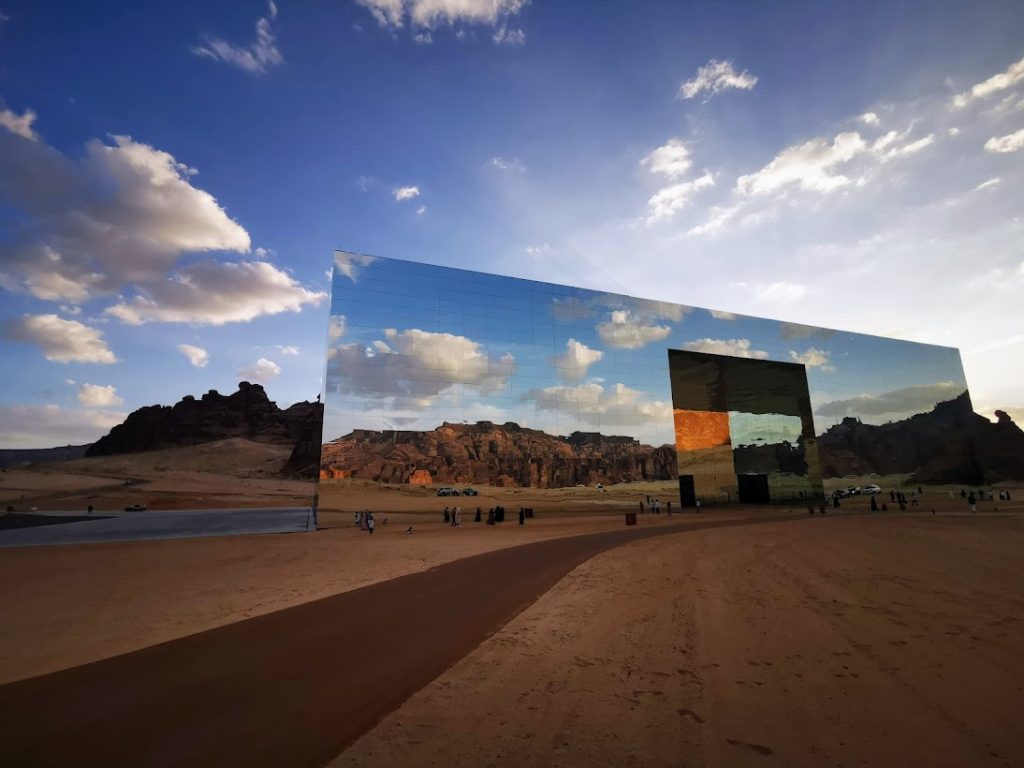
Maraya is a stunning mirror building built in the middle of Ashar Valley. It’s basically one large mirror with beautiful reflections of the surrounding desert canyon. Maraya is made of 9,740 mirrored panels, making it the largest mirrored building in the world, according to Guinness World Records.
Maraya, meaning mirror or reflection in Arabic, is technically a multi-purpose event hall hosting many events such as concerts of Enrique Iglesias or Andra Boccelli. There’s also a luxury Michelin-star-chef-run restaurant on top – Maraya Social (definitely need a booking). To see Maraya, you will need to pass a checkpoint when entering Ashar Valley. To be allowed in, you either need to have a booking in one of the luxury hotels there, have a table booked in Maraya Social, or possess a ticket to one of the events happening in the valley. That’s what we did – we got tickets for Ashar Valley Fashion Festival and passed the checkpoint with that. The tickets are free but you wouldn’t be able to enter without that
What to do in Al Ula?
There are many exciting things to do in Al Ula. Depending on how active you want to be, everyone will find something interesting. The Al Ula website is a great place to learn about events (we visited Al Ula Citrus Festival and it was so cool!) that happen regularly during the season. These are just a few tips on how to make your Al Ula trip even more exciting:
- Al Ula Adventure Hub: Via Ferrata, Zipline, Bike rental, Rock climbing, they’re even building a huge swing between the rocks
- Al Ula Wheels Bike Hub: Rent a bike (including electric bikes) in Wheels Bike Hub located between Al Ula and Hegra and cycle around the area. There is a 26km bike trail from the hub that goes from AlAtheeb to Hegra and back. They’re open Tuesday – Sunday: 6:00 am – 11:00 am, 3:00 pm – 7:00 pm.
- Husaak Adventures: Husaak offers many exciting outdoor activities. Their experiences include stargazing, hiking, 4×4 tour, or even overnight camping.
- Farm visits – there are many farms in the area that you can visit and learn about the agriculture in the region, some even provide additional services such as lunch and or horse riding. Typically they won’t speak English so we don’t have specific one to recommend, however the Al Ula website offers a free of charge farming experience.
- Fresh Food Market is the best place to meet local farmers and try some of their products. We get to taste local mandarines and other citruses and they taste amazing. Depending on the season, you can expect strawberies, all kinds of vegetables etc.

Other activities we know about but don’t have a specific recommendation:
- Stargazing – There are many plaf3 Arabic speakers can enjoy a great evening with Majed who’s an amazing storyteller connecting the astrology with ancient stories from (book via whatsapp +966 50 332 6625) or there few other agencies organizing stargazing trips. It will usually include about 1hr drive away from the city, dinner and the actual activity.
- Horse riding
- Buggy rides
- Camping
- Events
Where to eat in Al Ula?
Despite how small the area is, there are quite a few interesting places to eat. As in every touristic place, it is up to you whether you decide to try something made for tourists or look for more local experience.
Restaurants we tried in Al Ula
-
- Al Ula Heritage Restaurants & Kitchens – as local as it gets this restaurant offers traditional mandi and mahdi chicken with rice. They will serve it to your “booth” on a plastic tablecloth (and if you look touristy enough, you get a spoon as well). They also do grilled goats which we didn’t have a courage to try. This is really a place to try local food (and how locals eat), however, embrace yourself that hygiene or cleanliness is not what they’re known for. Definitely worth the experience (and the food is actually good!). Tip: try their kunafa (knafeh) – local desert that they’ll do on a pan in front of you.

- Beit Wafa – Hidden gem restaurant in the middle of 26° North resort. We went there for breakfast and had a really good time. You’ll park at the beginning of the resort and the golf cart will take you through orange tree alleys to the restaurant. There you can enjoy your meal surrounded by the mountains. While the (breakfast) menu is not very special and meal portions are small (you might need to order more than 1 meal per person), we absolutely loved the place! Make sure to walk back to your car as it makes for the full experience.
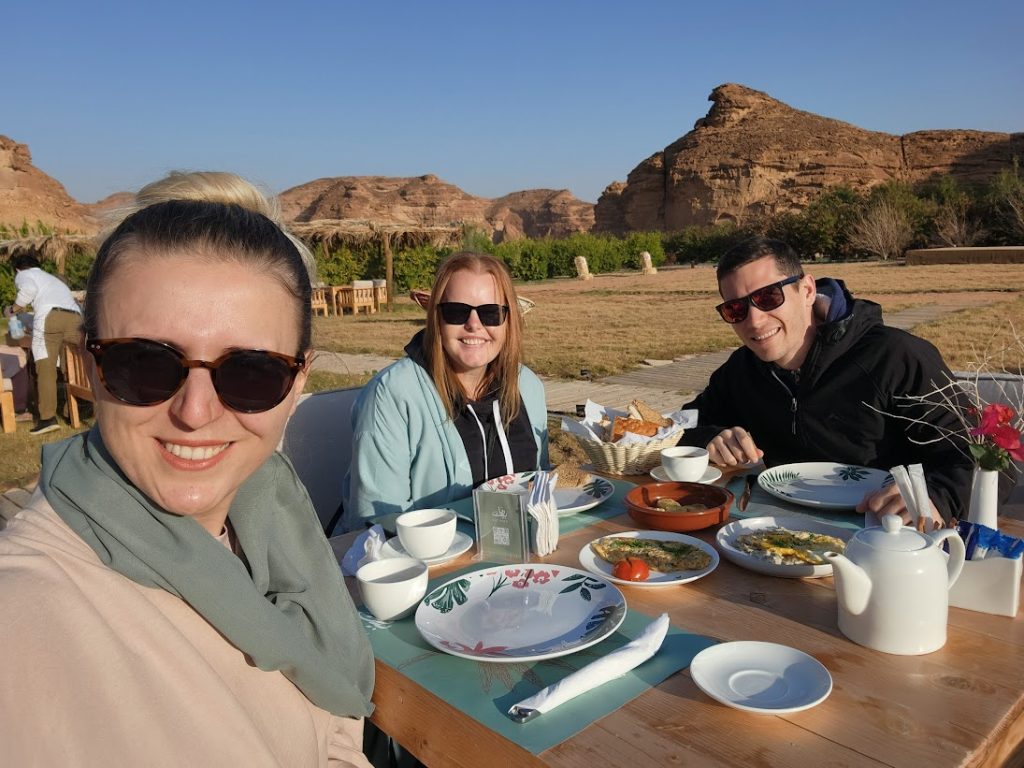
- Al Ula Heritage Restaurants & Kitchens – as local as it gets this restaurant offers traditional mandi and mahdi chicken with rice. They will serve it to your “booth” on a plastic tablecloth (and if you look touristy enough, you get a spoon as well). They also do grilled goats which we didn’t have a courage to try. This is really a place to try local food (and how locals eat), however, embrace yourself that hygiene or cleanliness is not what they’re known for. Definitely worth the experience (and the food is actually good!). Tip: try their kunafa (knafeh) – local desert that they’ll do on a pan in front of you.
- Somewhere – Near Old Town, you can find one of the most popular restaurants that serve a combination of Middle Eastern and Asian cuisine with a modern touch. While it’s quite pricey, the garden is beautiful and peaceful and the food is really good. We tried the fatets (meals with yogurt) and pots (Shrimp Sayadieh or Chicken Musakhan rice) and they were really delicious.
- Al Nakheel Café – is one of the restaurants in the Old Town. As it is usually the case, restaurants on the main tourist street are not the most authentic experience. The food is typical Arabic cuisine, service is average. The only reason we still included it on the list is that the outdoor settings is really nice and you can have a nice view around. I’d only recommend going here if you tried all other options before.
Other places we got recommended but didn’t have a chance a try
- Shalal Café was recommended as a nice breakfast place. Not necessarily because they’d have the best eggs benedict in the world, but mainly because of its settings in the middle of the rocks. Definitely planning to visit next time.
- Alhmozhim Camp is actually a farm that provides breakfast as well. They speak English so booking via phone should be an easy option.
- Tama at Habitas – one of the luxury restaurants in one of the most famous resorts. Supposed to have beautiful views, worth trying!
TIP: Most of the restaurants mentioned here (and many more) can be booked via MyTabble App. It’s Saudi’s preferred platform for restaurant bookings especially for higher-end places.
The best time to visit Al Ula
The best time to visit Al Ula depends on what you’re looking to get out of your trip. We went there at the end of January which was perfect with sunny weather during the day and cold (around 5°C evenings).
Generally speaking, the best time to visit Al Ula is between October and April when the weather is cooler and more pleasant. During this time, daytime temperatures are usually between 25-30 Celsius and the evenings are cool, making it ideal for outdoor activities such as hiking and exploring the ancient sites. It’s also a good time to attend the winter festival and other events happening during this season.
If you’re looking to experience Al Ula’s natural beauty, it’s best to visit during the spring months of March and April when the desert blooms with colorful wildflowers. The Al Ula Desert Sky festival is also held during this time of the year.
On the other hand, during the summer Al Ula gets very quiet. Many attractions and restaurants close and that’s when the city schedules renovations as well. Temperatures around 38 degrees and not-that-bad humidity can still make it for a good summer escape though and gives you a chance to enjoy their summer festival.
It’s also worth noting that Al Ula is a popular destination during the local holiday season, so if you’re looking to avoid crowds, it’s best to plan your trip outside of peak holiday travel periods such as Eid holidays or national days.
Cultural etiquette to keep in mind in Al Ula
Al Ula is still quite a traditional region so like everywhere else, it is important to be respectful of the local culture and customs. Here are a few recommendations to keep in mind when visiting Al Ula:
- Dress modestly, covering your shoulders and legs in public. (more what to wear it below)
- Avoid public displays of affection.
- Show respect for the local customs and traditions.
- Don’t take photographs of people without their permission and make sure you are aware of local laws on photography and videography (e.g. when using drones).
- Don’t try to touch or move any artifacts or antiquities without permission.
- Don’t bring any alcohol or other prohibited items into the country.
- Make sure to take care of your garbage. It’s heartbreaking to see some of the beautiful places covered with plastic bottles just because people are careless and lazy to take care of their things.
Please note that these are general guidelines and it’s always best to research the specific customs and laws of the area you are visiting before your trip.
If it is your first trip to Saudi Arabia or Arabic country in general, these are a few things that mind surprise you:
- Many women wear hijab (covering their hair) and burka (covering their faces) even after they’re not required to do so by law. It’s simply their tradition and travelers should respect that.
- It is still very normal to see men and women separated e.g. during a picnic or other activities. While this has been changing over the last few years (especially for younger generations), it shouldn’t surprise you. At the same time, no one will require you to eat separately from your wife or friend you’re traveling with.
- There is no alcohol in Saudi
- Weekends in Saudi are Friday-Saturday, especially Friday being dedicated to prayers. Take it into consideration when planning your trip
- Religion is an absolute priority for Saudis. Many shops or restaurants might temporarily close during prayers. Just wait a few minutes and everything will be back to normal, inshallah.
- Many people don’t speak English. As Saudi technically just opened to international tourists, you can easily find people who only speak Arabic. That includes people working in the tourism sector – like the guy who was taking care of our accommodation or the horse farm owner we visited. Embrace it as part of the experience and equip yourself with a few Arabic phrases. We actually had a nice conversation with locals through Google Translate.
Can women travel safely to Al Ula?

It is generally considered safe for women to travel to Al Ula and we saw a few women-only groups. As long as they take the same precautions as they would in any other unfamiliar place and respect local laws and customs, there’s nothing to worry about. When you dress modestly and avoid any actions that could be considered disrespectful or offensive, you will not face any issues.
Again, many locals might not still be used to seeing international tourists on a daily basis so you might feel getting more attention than if you travel in Europe. Both my blonde-hair wife and red-hair friend attracted looks and compliments from local women but didn’t face any uncomfortable situation whatsoever.
What to wear in Al Ula
When visiting Al Ula, it is important for both men and women to dress modestly and conservatively. Here are a few recommendations to keep in mind:
- Wear loose-fitting, long-sleeved shirts and pants or long skirts that cover your legs.
- Avoid revealing clothing such as tank tops, shorts, and short skirts.
- Wearing a headscarf is no more mandatory for women. This doesn’t apply if you’re planning to visit any religious site.
- Wear comfortable, closed-toe shoes that are easy to walk in the sand.
- Bring a light sweater or shawl to cover your shoulders if needed, as air-conditioning can be quite strong in indoor spaces.
- While it will probably be nice and sunny during the day, mornings and nights can get really chilly.
- Dress in a way that shows respect for the culture and customs of Al Ula.
Do you have questions? Leave them in the comments!
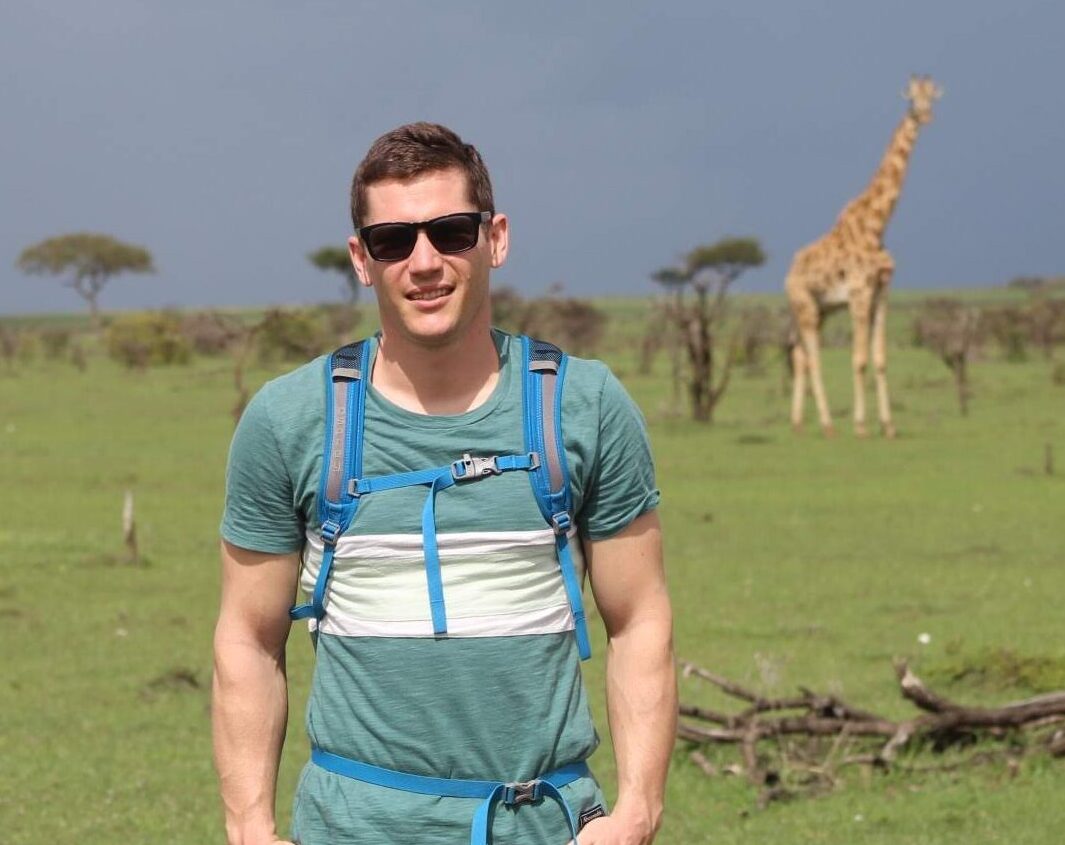
I love the airport buzz, planes and most of all – the feeling when you discover or experience something new. Together with Anna, we launched our gift voucher platform Ithara.ae. Photos are usually taken with Canon EOS 4000D, my Huawei Honor phone and DJI Mavic Pro.
